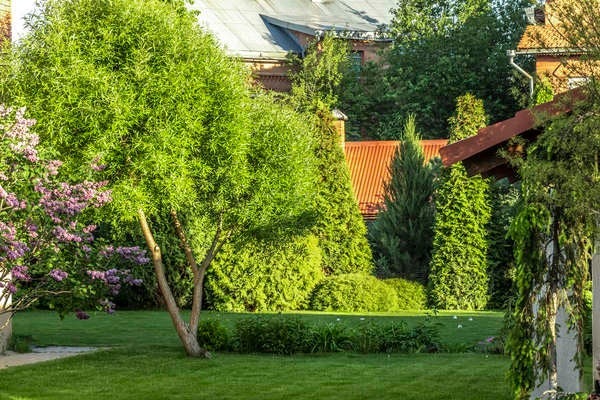

We may earn revenue from the products available on this page and participate in affiliate programs. Learn More ›
You don’t need a fence to maintain your privacy when you can block your nosy next-door neighbor from peering into your yard with the help of plants. These trees (along with some shrubs and vines) can help turn your property into a secluded retreat, and they can be far cheaper than installing a fence or other privacy structure.
1. Arborvitae (Thuja occidentalis)
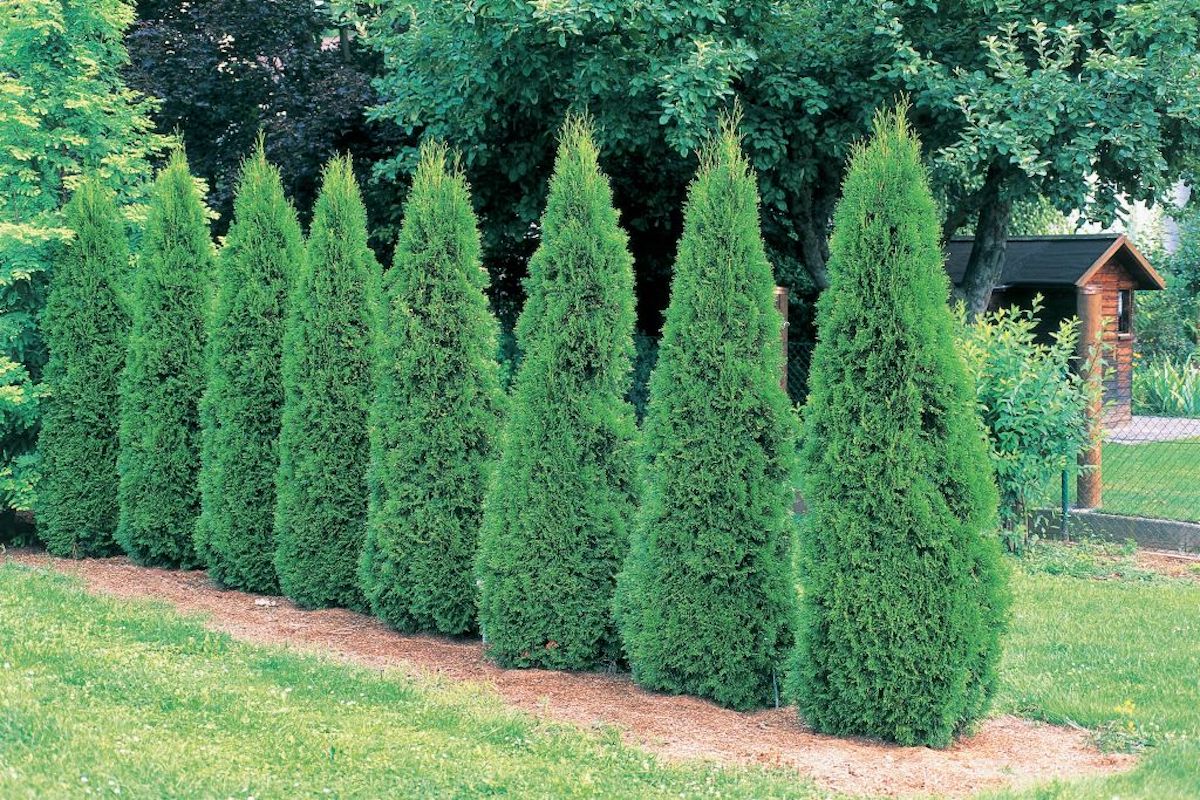
There are many reasons why arborvitae is among the most popular plants for growing a living privacy fence. Its thick evergreen foliage creates a dense hedge when the trees are spaced properly, it tolerates most soil conditions, and it’s cold hardy and low maintenance. There are several varieties with different stature, from giant to dwarf trees, so consider the plant’s mature height and width when choosing the right arborvitae for your space.
2. Bamboo (Bambusa vulgaris)
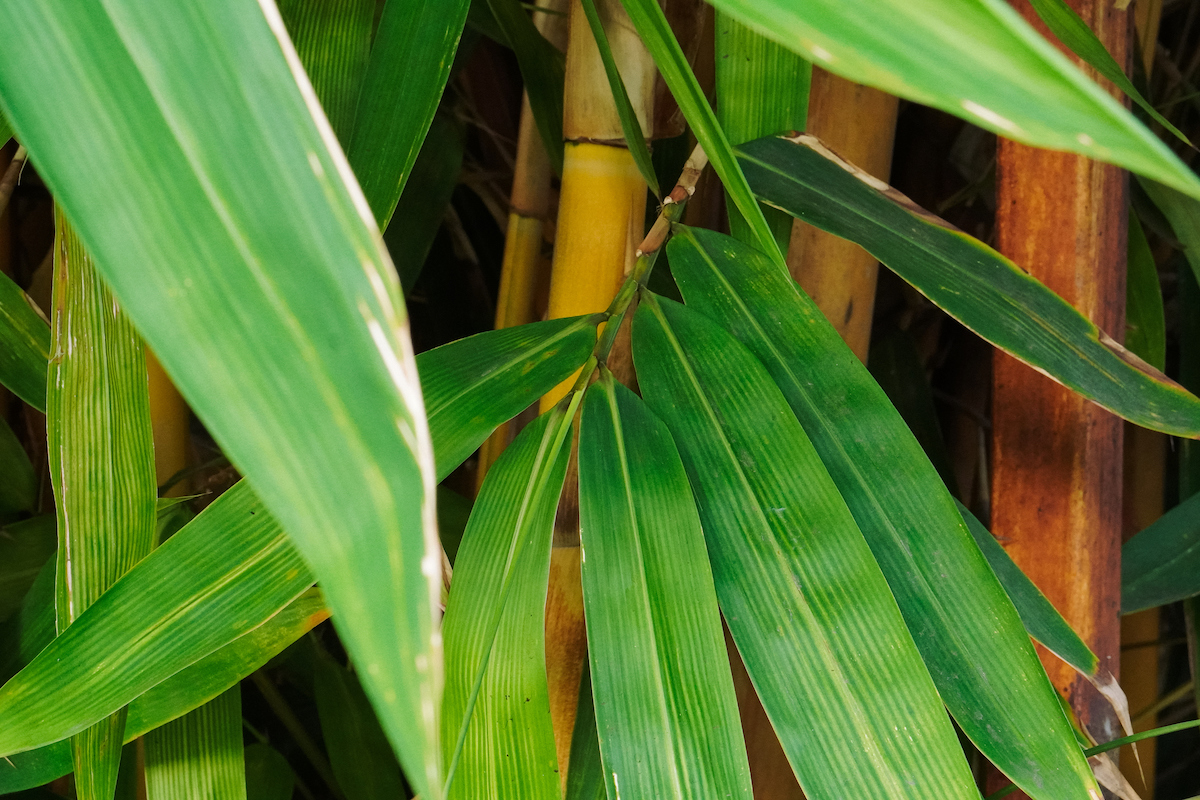
Bamboo is one of the fastest-growing plants in the world, so it can create a lush and exotic privacy screen very quickly. Some varieties of bamboo are invasive, so consider picking a slow-spreading, clumping variety, or planting it in large raised planters to keep it under control.
3. Skip Laurel (Prunus laurocerasus ‘Schipkaensis’)
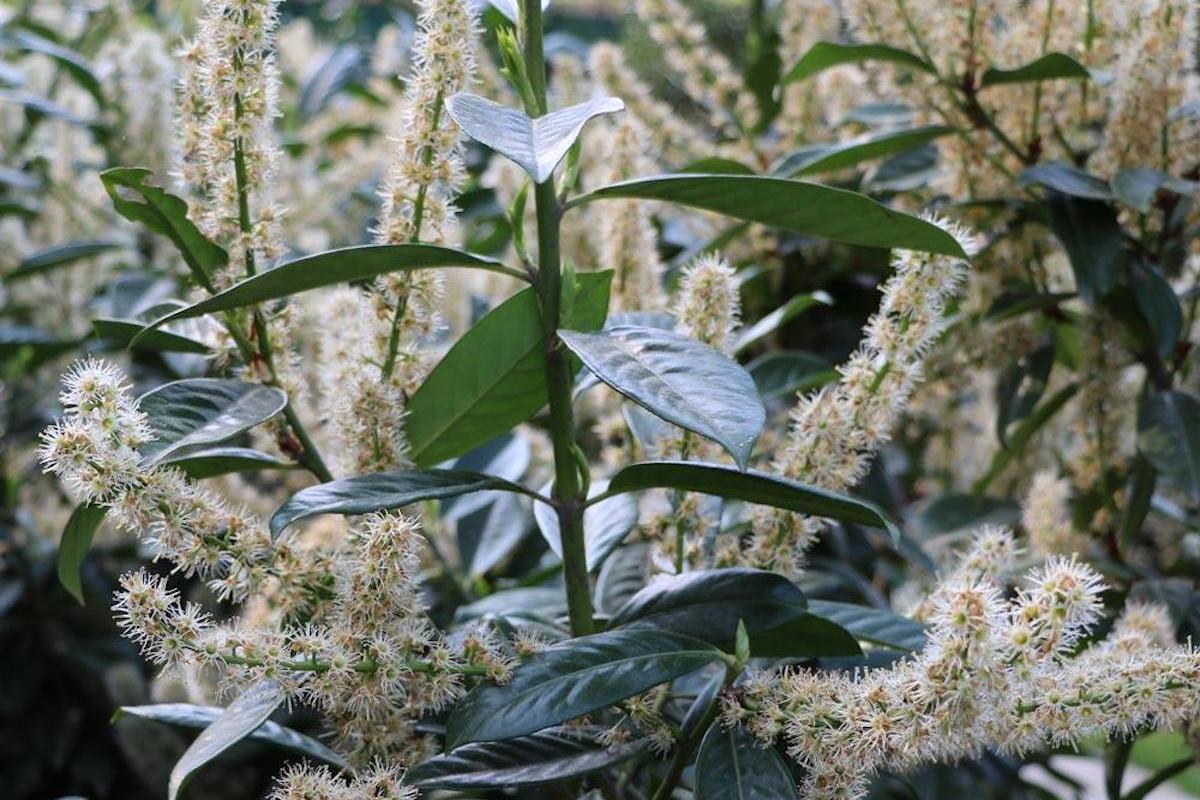
With annual shaping and pruning, the dense evergreen foliage of skip laurel (also known as schip laurel) can make a beautiful 10-foot-tall privacy screen. Planted in a sunny location and in well-drained soil, a laurel hedge will reward you with white blooms in spring.
4. Privet (Ligustrum vulgare)
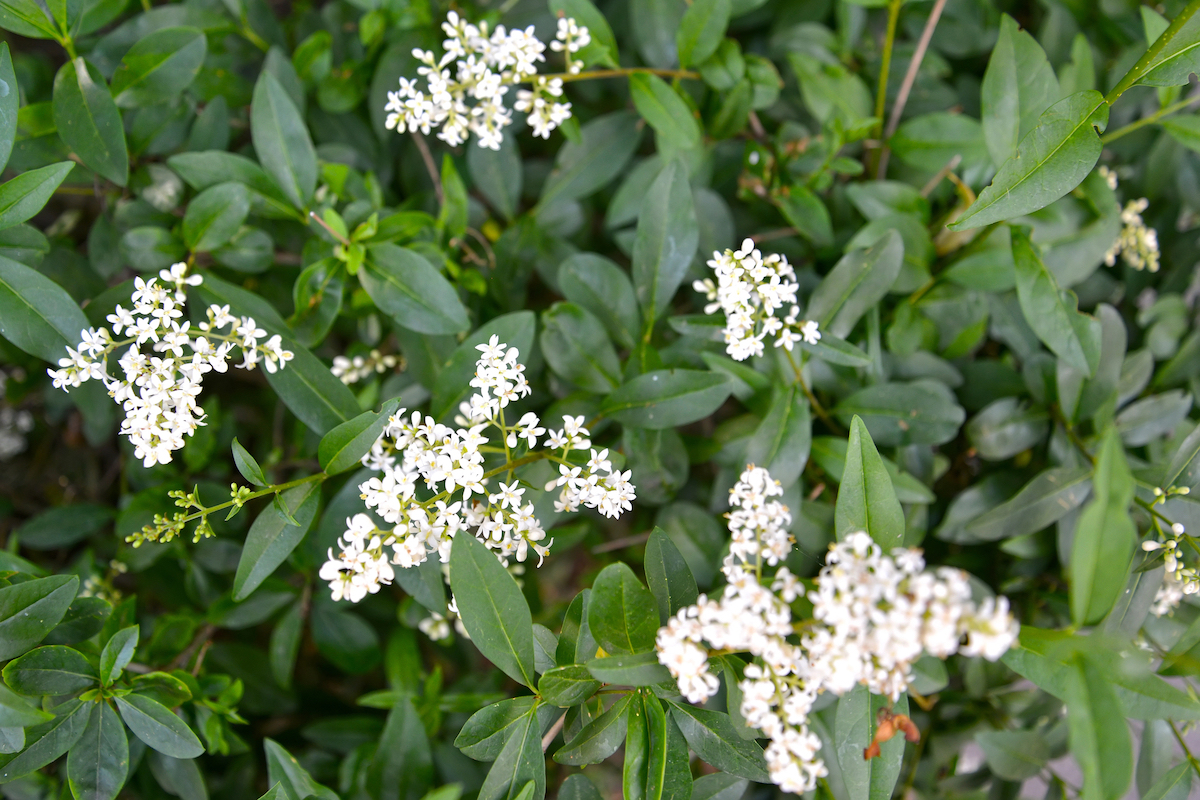
Fast-growing privet can get you privacy in a hurry; if given proper care, it can add between 2 and 3 feet to its height each year. When grown as a hedge, privet needs to be pruned regularly, but that hard work pays off when the plant produces a thick cover of sweet-smelling flowers every spring.
5. Holly (Ilex aquifolium)
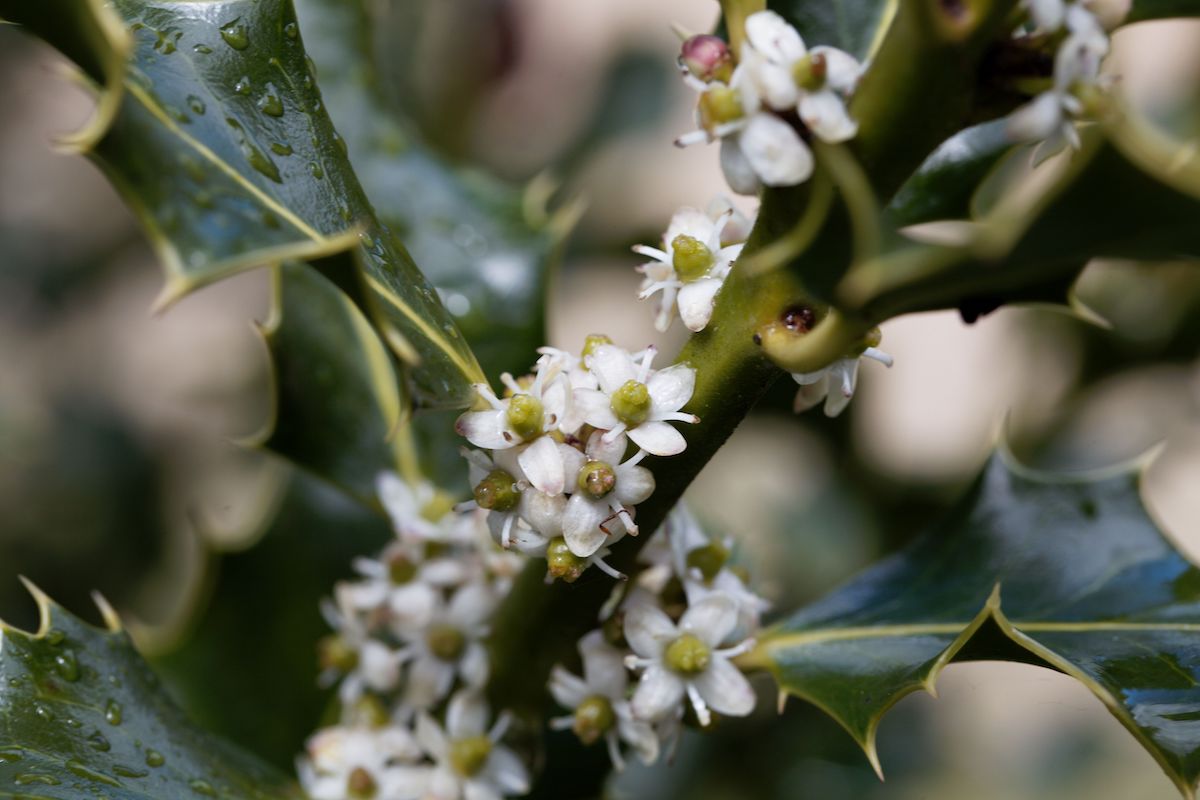
There are many varieties of holly that provide excellent privacy in the yard. Available as tall trees or dense shrubs, and in colors that run the gamut from green to variegated, holly offers something to satisfy any landscaping preference. Homeowners with small children or sensitive hands may want to consider a soft-leafed variety that’s free of the plant’s signature sharp, spiny leaves.
6. Boxwood (Buxus sempervirens)
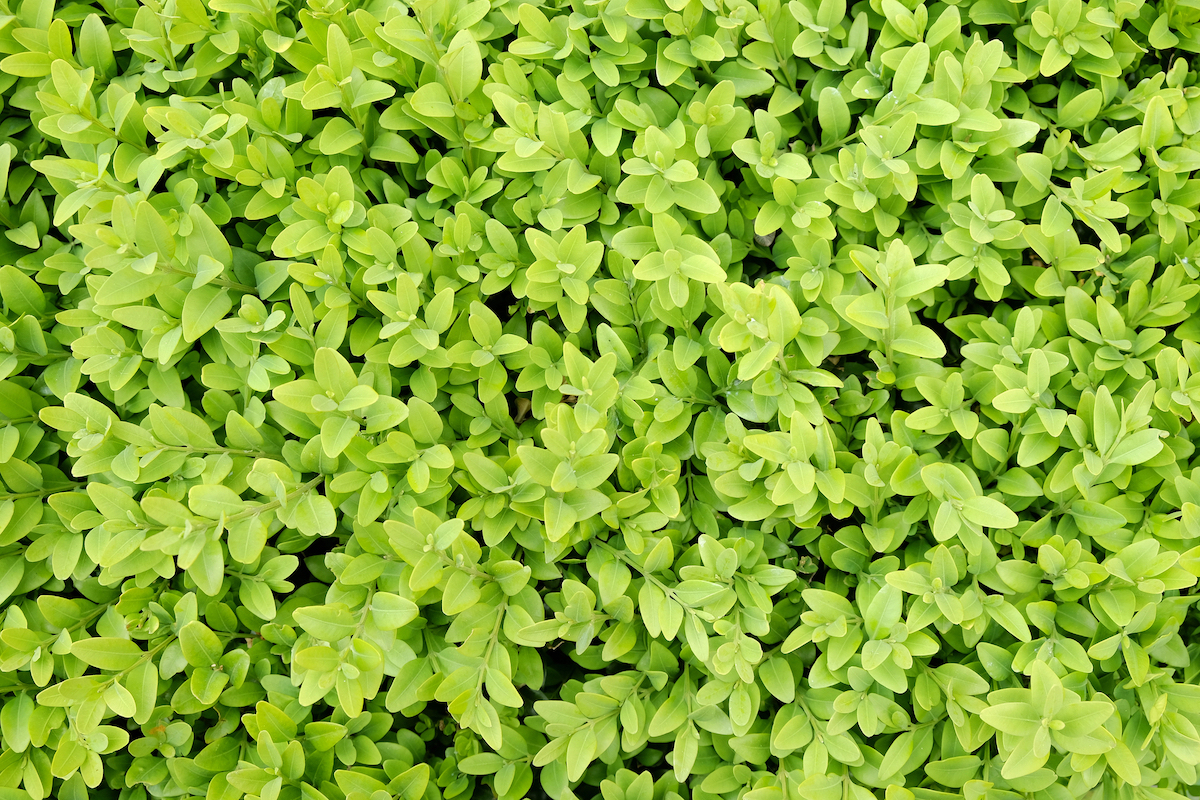
Boxwood has been long used as a decorative pruned hedge in formal gardens, but it’s also beautiful when less strictly maintained. Allowed to grow freely, some varieties can reach 20 feet tall.
Many people think of boxwood as a deep-green plant, but there are also beautiful white variegated and gold varieties. Grown as a fence or in containers, it will provide rich scenery and a lush, living wall to protect your yard from prying eyes.
7. Hicks Yew (Taxus x media Hicksii)
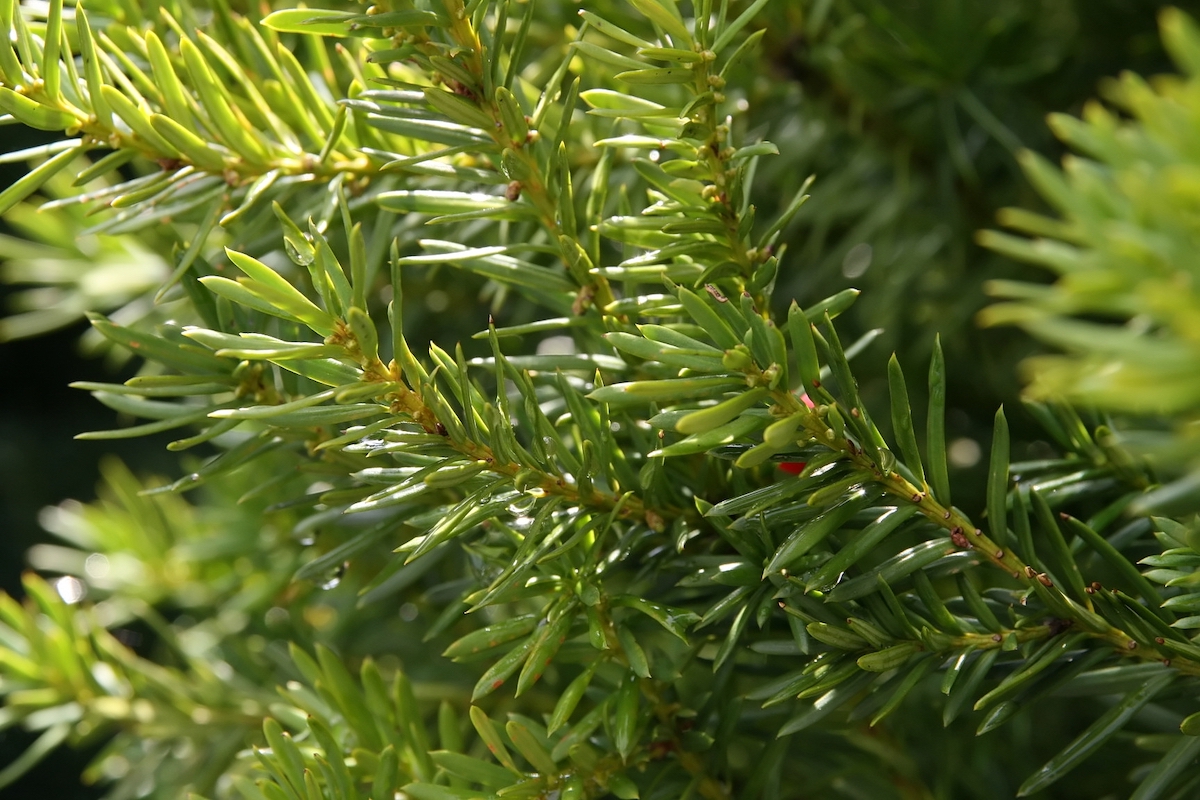
Hicks yew, while not flashy, is a sensible choice for a living fence or privacy screen. This low-maintenance option sets a wonderful evergreen backdrop for the rest of a yard, and its soft needles and winter berries make it a fast favorite with backyard wildlife.
8. Red Twig Dogwood (Cornus sericea)
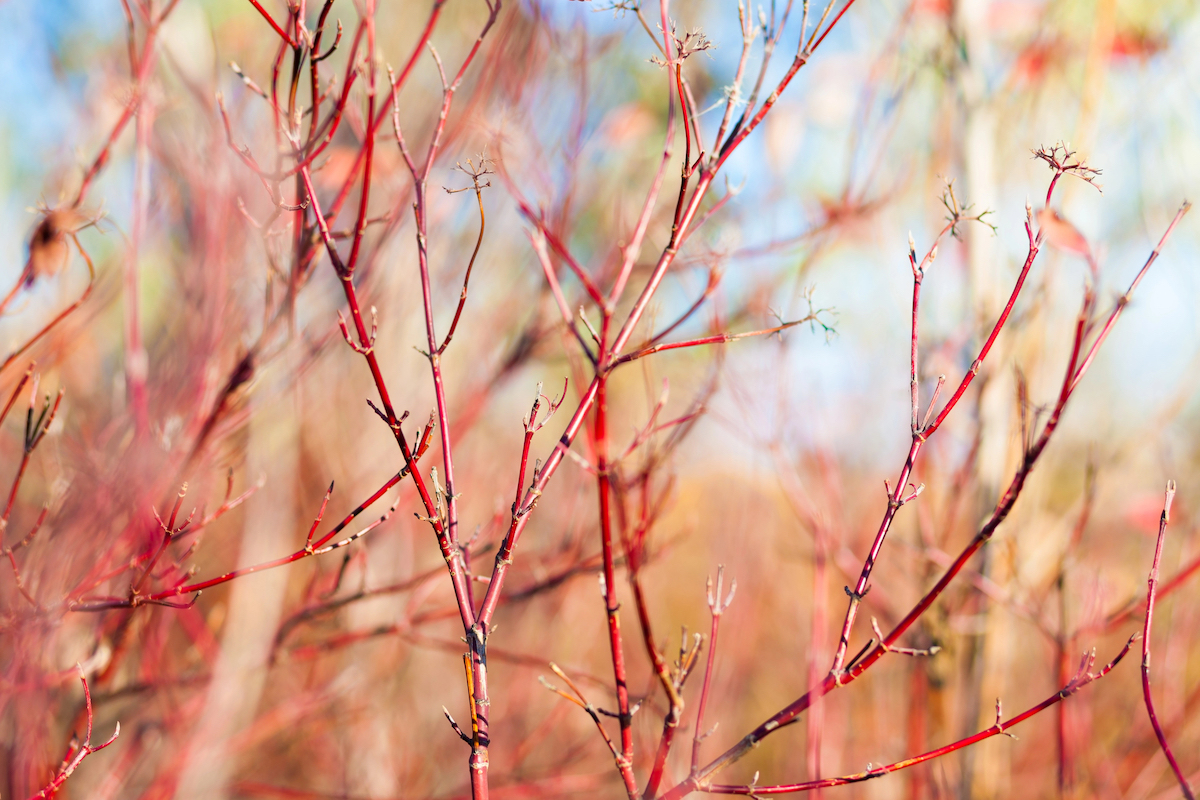
Red twig dogwood is deciduous, but it displays a cheerful and seasonal thicket of bright red branches when it loses its leaves in fall. It can tolerate temperature extremes and even soggy soils, and it provides habitat for wildlife in all seasons. This fast-growing shrub can reach 8 feet tall and 10 feet wide, creating an impressive display in a yard.
9. Chocolate Vine (Akebia quinata)
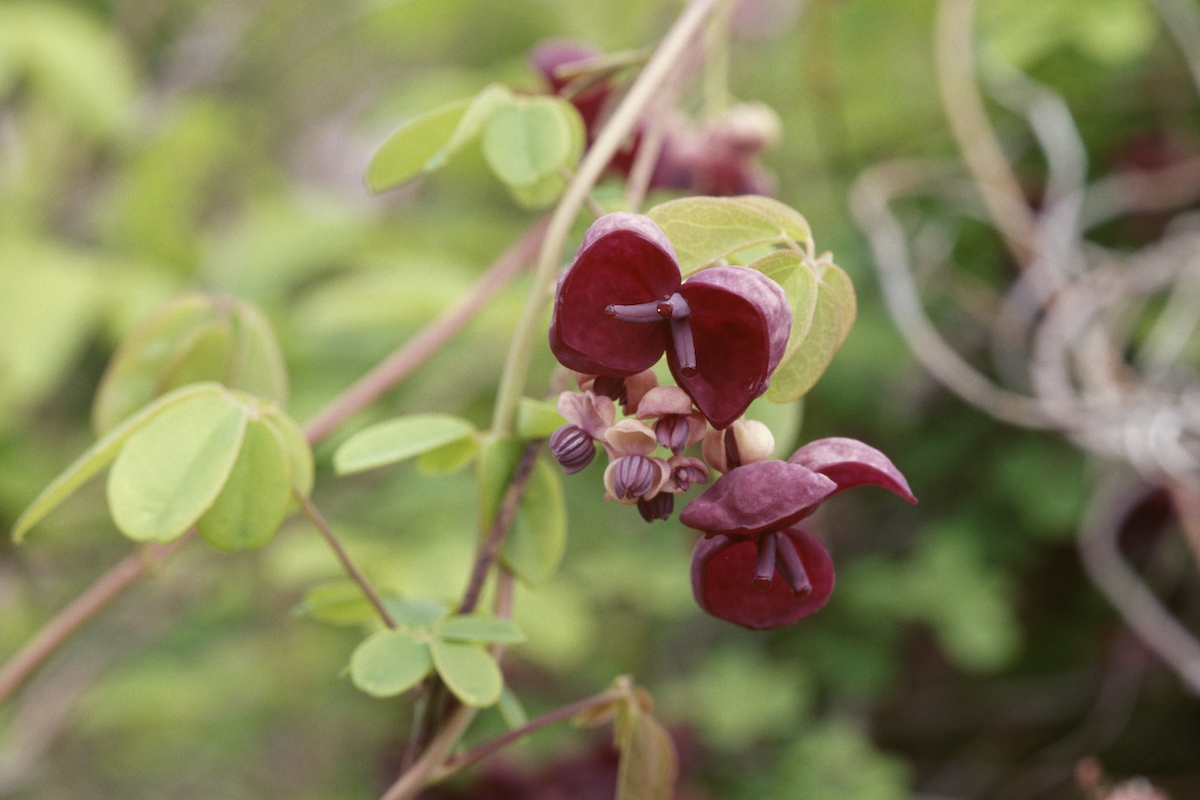
The hardy chocolate vine, also known as five-leaf Akebia, grows vigorously on a trellis or fence and provides a thick screen of green leaves and fragrant purple blooms in early summer. It spreads very quickly, so be sure to rein it in with regular pruning.
10. Euonymus (Euonymus europaeus)
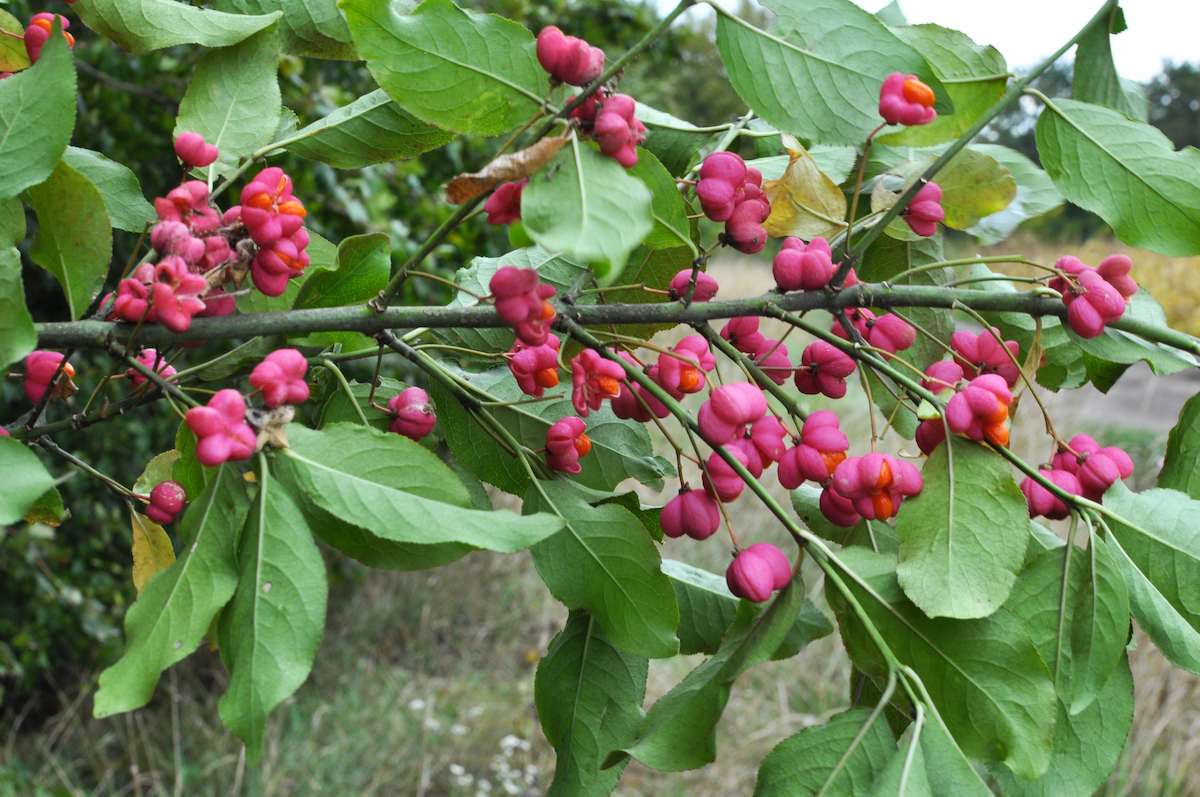
Euonymus are privacy shrubs that come in many sizes and colors, including green, gold, and variegated. This tall and sturdy shrub tolerates all types of weather and even poor soils. Planted close together, euonymus can serve as a lush hedge, but it also makes a big impact when pruned into a tree shape.
11. Cypress (Cupressus)
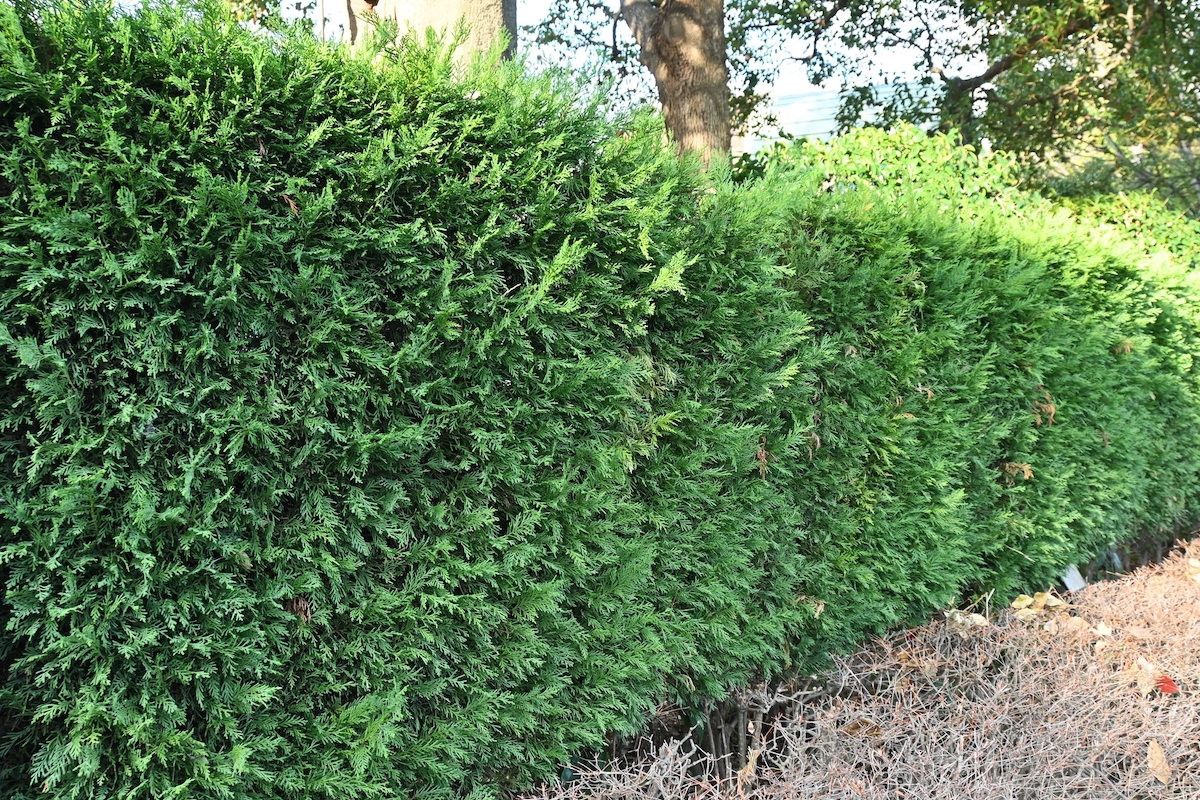
These slender, tall plants are one of the best privacy trees for backyards. The Leyland cypress tree is the ideal pick for quickly adding privacy to an outdoor space. The trees grow quickly—up to 5 feet every year—so you can expect to block out curious eyes within a few seasons. Remember, though, fast-growing privacy trees require more maintenance, so keep that in mind before settling on this one.
12. Lilac (Syringa vulgaris)
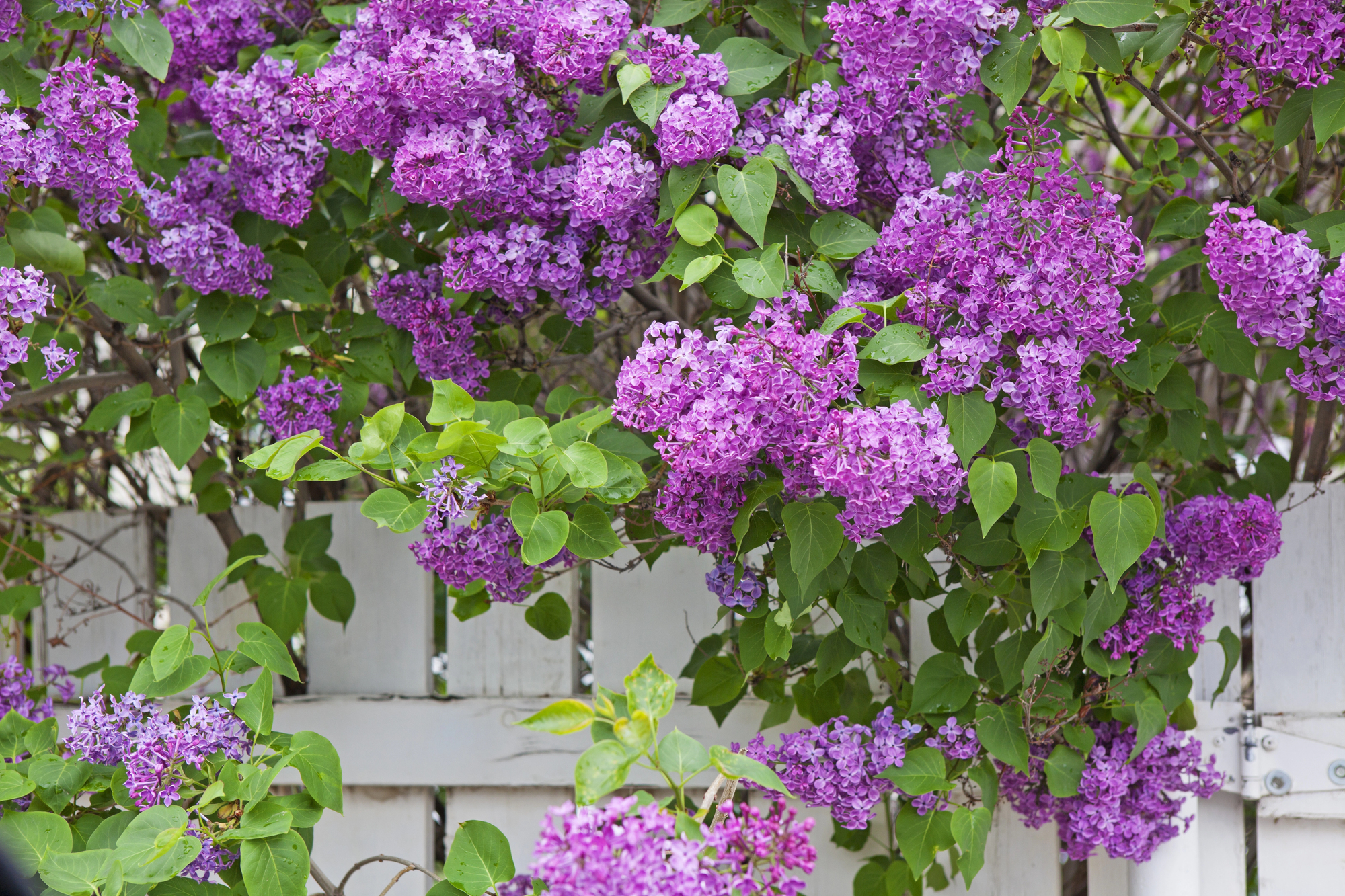
Pretty, fragrant lilac bushes can also be planted as privacy hedges. They make lovely privacy plants thanks to their colorful, pleasant-smelling blooms. Lilacs need lots of sun, so opt for another hedge option if you’re situated in a shady spot. They also require yearly pruning. Remove dead and damaged branches to help encourage new growth and healthy flowering.
13. Butterfly Bush (Buddleja davidii)
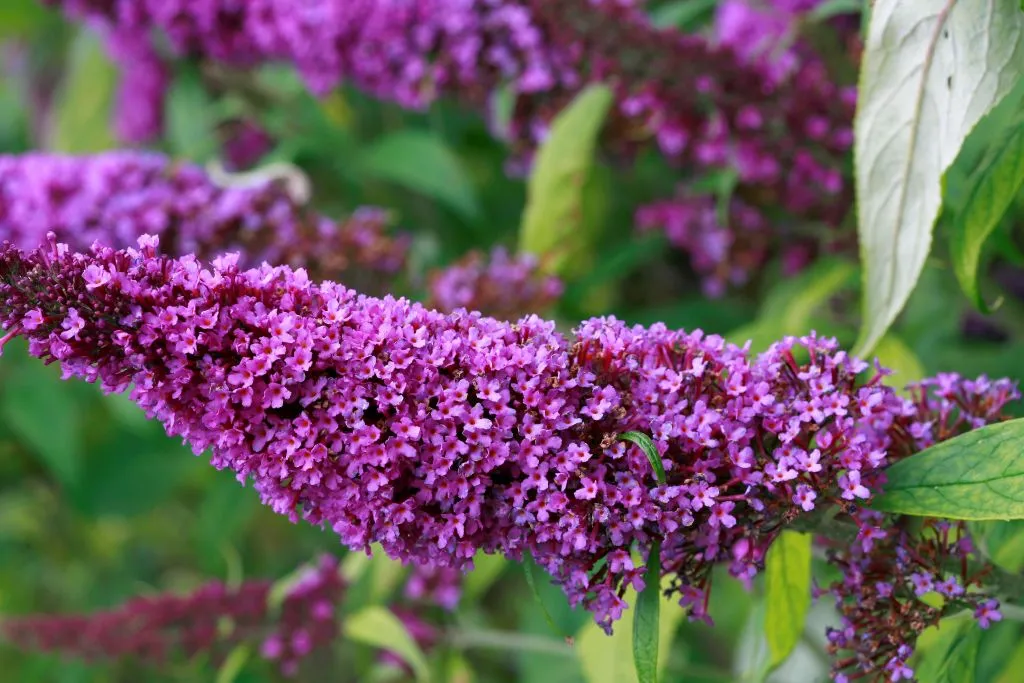
The bushy purple flowers on the butterfly bush attract pollinators and other beneficial bugs, making it an excellent privacy option for the edible garden. Significant advantage of butterfly bush are that it’s a drought-tolerant plant, and it blooms from spring to fall. Most varieties aren’t invasive, but it’s important to confirm this before buying just any cultivar.
14. Hydrangea (Hydrangea L.)
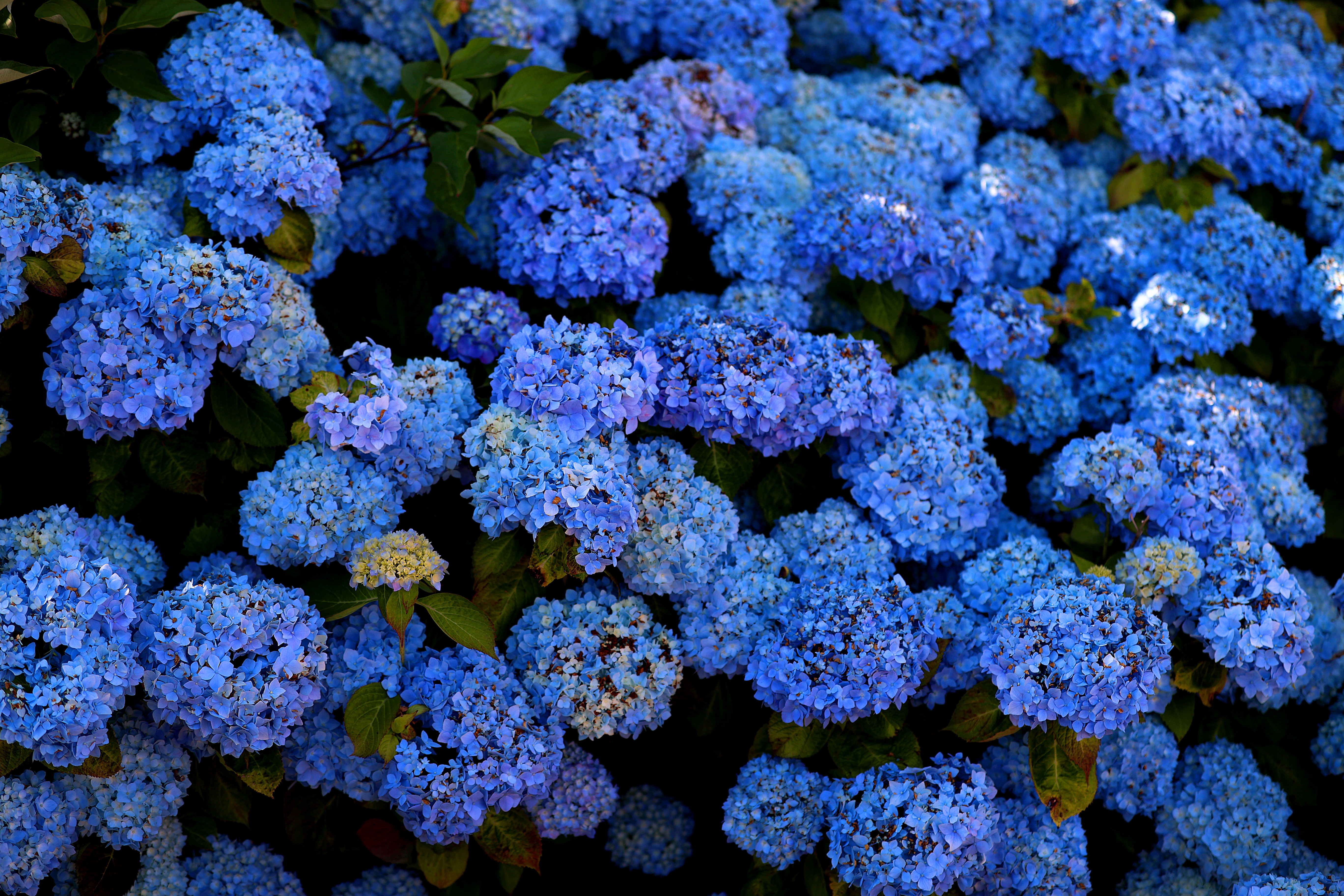
Hydrangea plants grow up to 8 feet wide and 8 feet tall, making them great hedge plants. Planted in a row, the cone-shaped blooms on these privacy bushes become a garden focal point. One caveat: Hydrangeas lose their leaves in the fall, so they don’t provide year-round privacy. However, you can pair them with other hedge plants to maintain some cover during their offseason.
15. Juniper (Juniperus communis L.)
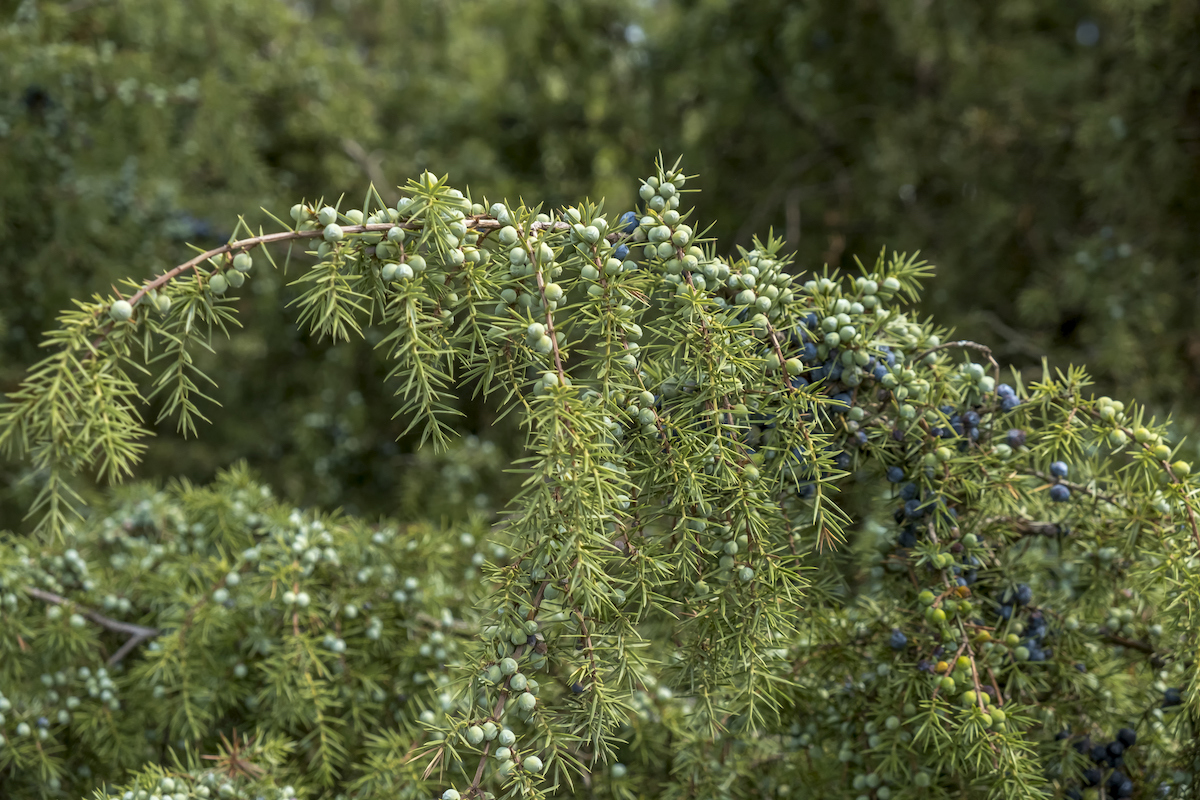
Several varieties of juniper make excellent privacy screen plants. Many cultivars grow up to 10 feet tall or more, including California and Sierra junipers. Some varieties are better suited for large properties, while others, like Spartan juniper, can be planted closer together. Their tight-spaced foliage also makes junipers a great option for blocking wind.
Looking for more ways to get a little peace and quiet on your own land? Check out some of our other favorite backyard privacy ideas.
